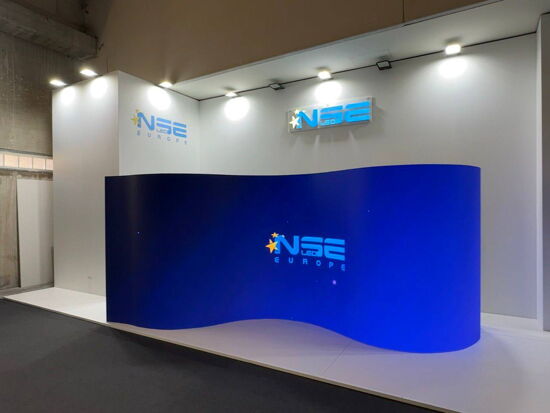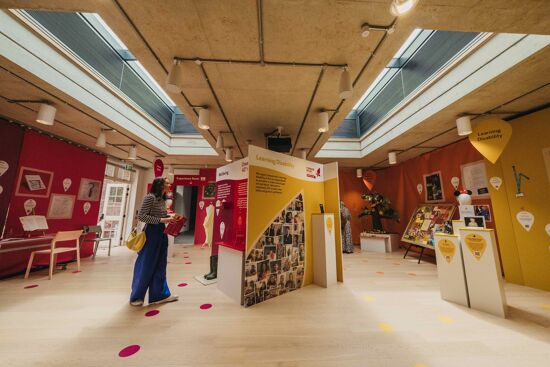PaperLab market worth €2 billion: Epson
Epson has developed what they call "the first ever in-office paper recycling machine", which takes used documents and turns them into clean, white, blank sheets, in just 3 minutes.
The PaperLab, which Epson claim will "revolutionise recycling" is capable of reusing 14 sheets of A4 paper per minute, meaning 6,720 sheets could be produced in a regular eight hour day.
It can also produce different kinds of paper, A3 sheets, thick paper for business cards, coloured paper and even scented paper.
The machine looks like a large photocopier and pulverises printed sheets into individual fibres using a process Epson calls defibrating. The process removes inkjet inks and toners, reducing the printed sheets to their naked paper fibres.
Water consumption is also minimal and the technology incidentally saves the trouble of shredding documents. There is a considerable carbon footprint attached to the shredding process, which generally involves secure and expensive transport to dedicated offsite shredding facilities.
With the PaperLab, secure documents can be dealt with onsite with a managed process that is even more secure.
The recycled material is turned into new sheets of paper through the addition of a special binder and a little water. The binder adds strength and chemicals and can also colour the sheets or enhance their whiteness.
The mix is pressed and calendared to produce new sheets, and can even be scented. PaperLab uses far less water than conventional papermaking and although it is initially intended for office environments, the technology can be scaled up.
Minoru Usui, Epson’s global president says that PaperLab will transform workplace behaviours and practices. “PaperLab can recycle waste paper in the office using a dry process, therefore creating an office ‘eco-system’ that reduces CO2 emissions, increases savings on collection, disposal and logistics, ensures secure disposal of confidential documents and saves water, which is used in huge volumes in traditional recycling processes.”
It takes about three minutes for PaperLab to produce its first new sheet of paper once the machine is loaded with waste. When we first heard about the technology last year it was rated for 18 new A4 sheets per minute, but that figure is now 14, to produce 6,720 sheets per eight-hour shift. The machine can also produce A3 sheets and in a variety of weights from office sheets to business card stock.
Epson reckon it will take a year or so to ready PaperLab for the commercial market, a market they estimate to be worth €2 billion. And that’s just in the office sector. The opportunities for Epson to deploy PaperLab in markets such as graphics where they have such broad expertise in substrates and inks, are surely vast.
Epson to showcase its latest innovations at FESPA 2017
Industry members that are keen to learn more about the new PaperLab recycling system, as well as the many other solutions on offer from Epson, can visit the manufacturer at FESPA 2017.
Taking place from May 8-12 at the Hamburg Messe, in Hamburg, Germany, the exhibition will play host to many major brands from across the global market.
Epson is just one of a host of industry heavyweights that will be in attendance at the event, with visitors able to find the company at booth D45 in Hall A1.
For more information on FESPA 2017, the companies that will exhibit and to sign up to attend as a visitor, please visit: www.fespa2017.com
Delegates can save 70€ entry fee to the exhibition by registering via the website and quoting reference code: FESG702. Discover how a visit to FESPA 2017 can benefit your business and register today.
Topics
Interested in joining our community?
Enquire today about joining your local FESPA Association or FESPA Direct
Recent news
.png?width=550)
Why are FESPA events the ideal place for visionaries to meet? With Harold Klaren from EFKA
We speak to Harold Klaren, International Sales Manager at EFKA about visionaries in print. Harold shares why he believes FESPA events are the ideal place for visionareis to meet.

NSELED to showcase Innovation and transformation at European Sign Expo 2025
NSELED Europe, part of leading LED display technology provider NSE, will welcome visitors to its stand at the European Sign Expo 2025. Ahead of the event, we speak with Daniele Rocca, principal chief executive officer at NSELED Europe, about what to expect from the company as the official ‘Digital Screen Partner’ of the event.

Why the Future of Print Is Personal – and What That Means for Your Business
Minna Philipson, CMO at Gelato shares how the future of print is personal, driven by demands for tailored, localised, and on-demand products. Businesses must adapt, embracing software to streamline operations and building customer-centric brands. Personalisation is key to connection, requiring emotional storytelling and flexible operations to thrive in the evolving market.

The latest sustainable solutions in non-digital signage
While by no means a new concept in the market, sustainability is becoming an increasingly important part of daily life for sign-making businesses. Here, Rob Fletcher shares some of the non-digital materials to help companies become more planet friendly.